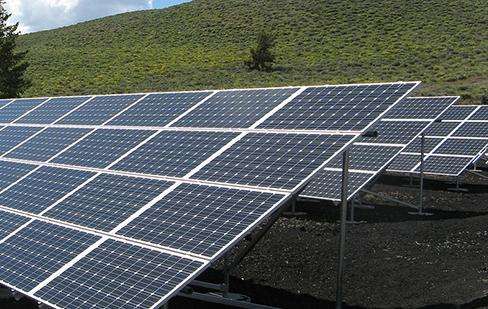Recovered water power plant.
Purified water (called “reclaimed water”) obtained after secondary treatment of urban domestic wastewater is used as a primary water source or an auxiliary water source for power plants.
This not only saves groundwater resources, but also reduces environmental pollution caused by large amounts of urban wastewater discharge.
The biggest obstacles to the application of inorganic ceramic membranes in water treatment mainly include two aspects. One is the complex manufacturing process, high cost and high price; the other is the problem of membrane flow only overcoming the membrane. fouling and Only by increasing the filtration flow of the membrane can it be truly applied to various fields of water treatment.
The inorg ceramic membrane systemanique DECEAN developed by Seattle Environmental Technology Company in the United States is based on the research of ordinary ceramic membranes, through high-tech processing, it reduces membrane pollution, significantly increases membrane flux and. effectively solves the problem of The main problems in the application of inorganic ceramic membranes in water treatment makes it possible to use inorganic ceramic membranes in water treatment.
1. The unique double-layer membrane structure reduces membrane pollution on the one hand and improves the strength of the ceramic membrane tube and membrane filtration flow on the other hand.
DECEAN inorganic ceramic membrane system prepares TiO2 sol by sol-gel method on the surface of membrane filter layer and uses dip and pull method to coat the nano-TiO2 photocatalytic material on the memberane ceramic. , making ceramic The membrane surface has a “self-cleaning” function, which slows down the accumulation and clogging of organic matter on the membrane surface, reduces membrane pollution, and improves the stable membrane flow of the membrane system;
2. The structure of Al2O3-ZrO2 composite membrane makes the membrane tube mechanical. Performance is even better. Due to the performance defects of the material itself or some practical problems in the preparation process, a single inorganic membrane material generally cannot meet the actual requirements. Therefore, the development of composite separation membranes loaded with inorganic substances has been rapidly developed. DECEAN inorganic ceramic membrane adopts integral composite technology which uses sol-gel method to prepare Al2O3-ZrO2 composite membranes, because ZrO2-containing materials have une better mechanics. strength, chemical durability and resistance to alkali erosion Compared to materials such as Al2O3, SiO2 and TiO2, DECEAN inorganic ceramic membranes have higher mechanical strength and thermal stability, and the pore size distribution of the composite membrane is narrow and single-peaked.
3. Online recoil can be achieved and the membrane flow is stable. Due to the unique structure and mechanical properties of the composite ceramic membrane, it can effectively resist recoil pressures below 0.4 MP and can achieve online recoil. thus achieving stability. Membrane flow overcomes the problems of inorganic membrane systems in water treatment applications such as high price, easy pollution, low membrane flow and bulky equipment, making it possible to apply inorganic ceramic membrane systems in the treatment of eau.
The DECEAN inorganic ceramic membrane is specially designed for wastewater treatment. Its biggest feature is its large membrane flux, which is 10 to 10 times that of ordinary organic membranes and 5 to 10 times that of ordinary ceramic membranes. has high mechanical strength, pollution resistance, and can achieve online recoil.
Main technical parameters of DECEAN inorganic ceramic membrane:
p>Membrane thickness: 50-60 μm, membrane pore size 0.01-0.5 μm ;
Porosity: 44-46%
Filter pressure: 0.15 MPa, flushing pressure: below 0.7 MPa;
Membrane material: double-layer membrane, TiO2 outer film; Al2O3-ZrO2 composite film.
The main areas of application for DECEAN inorganic ceramic membranes:
Recovered water
Detoxification treatment of raw water from industrial agriculture
p>
Large ; -Large-scale cooling water bypass filtration systems in power plants and chemical plants;
Oilfield produced water reuse treatment
Steel rolling emulsion waste liquid treatment
Metal; Regeneration treatment of surface cleaning fluids.
Specific water quality analysis and pilot testing are required














